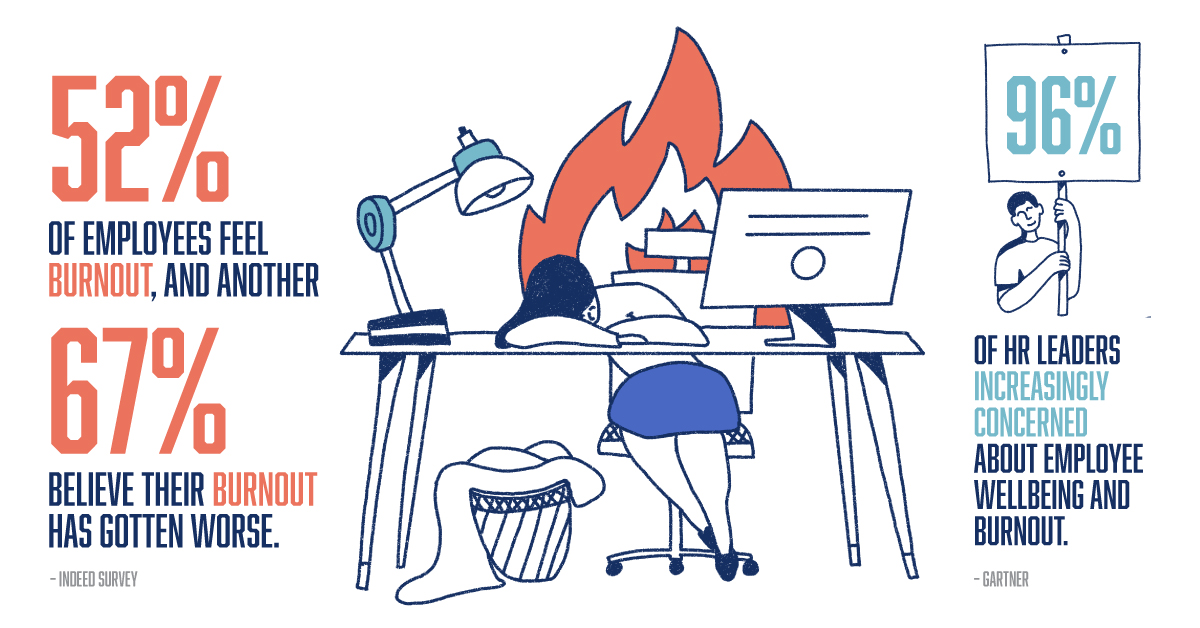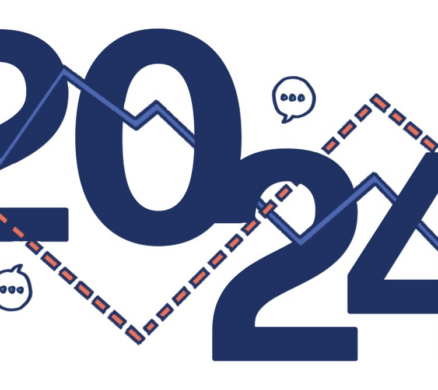
Updated January 10, 2022
Over the past year, there has been a lot of talk about burnout. It’s more than talk, though. Studies are showing it’s real—and impacting every aspect of life, including work. If you ignore it, your most valuable asset—your employees—will suffer. And your business will suffer along with them.
Burnout occurs during normal working conditions, so it’s not surprising that as repercussions linger from the pandemic, burnout continues at a higher-than-normal rate. If you are wondering if it’s impacting your organization, look around. Are your high-performing workers showing signs of being exhausted? Cynical? Are they making uncommon mistakes or frequent errors? Are employees working excessive overtime hours on a regular basis? All of these are signs that employees are overburdened, overwhelmed and just plain over it.
If left unaddressed, employee burnout can have widespread effects. Perhaps there is no greater example than what is known as The Great Resignation—where workers voluntarily left jobs, hitting a high point in October of 2020. In a 2021 Google Year in Search report, 60% of searches from April to June contained “how to write a resignation letter.”
Bottom line: it’s more important than ever to prevent employee burnout so you can avoid even more significant problems.
Here are four proven ways you can address employee burnout:
1. Talk about mental wellness—regularly.
Make mental wellness an accepted and natural part of your company culture. For example, Cummins Inc. is focused on overcoming stigma related to mental health and making sure its employees across the globe know that help is available to them and their family members. They have launched an “It’s OK” global initiative that aims to normalize the mental health struggles which we all face in life and encourages employees to take action to improve their mental wellness.
2. Equip your leadership.
Managers and leaders need to be open to discussing burnout and well-being with employees. They must understand what burnout looks like and how to help employees work through it. Perhaps, most importantly, they must model it themselves—taking breaks, setting boundaries, talking opening, etc. One Westcomm client encourages its leaders to do “wellness rounding,” checking in with employees periodically.
3. Highlight benefits and programs.
It’s likely you offer a number of benefits, programs and resources for mental health and wellness—even if they aren’t labeled as such. Make sure employees are aware of mental health benefits covered by the medical plan, as well as free resources like EAP. And remind employees about family friendly benefits like time off, flexible work schedules, childcare services, etc. All of these help employees find work-life balance and keep burnout at bay. Some companies are also beginning to introduce more holistic training for resiliency and stress management.
4. Encourage participation in wellness programs.
Our physical and mental health are linked, so one way to improve our mental wellness is to care for our physical selves, too, with nutrition, sleep and exercise. Offer and encourage participation in wellness programs—and all the better if you can offer incentives. Also consider offering meditation and mindfulness apps and resources.
Your employee engagement strategies are key.
Employee burnout is not a new phenomenon, but the last couple of years have intensified the problem. Now more than ever, companies are showing flexibility and tolerance. For example, meeting interruptions are ok, and it’s not the end of the world if an employee is taking care of the kids while working at home. We all want employees to function at a high level. To do that, they must be well both mentally and physically. And as HR and communications professionals, you can help provide important strategies for improving employee wellbeing before burnout takes hold.
Reach out below or at helloindy@westcomm.com, or follow us @westcomm on LinkedIn for more insights.





